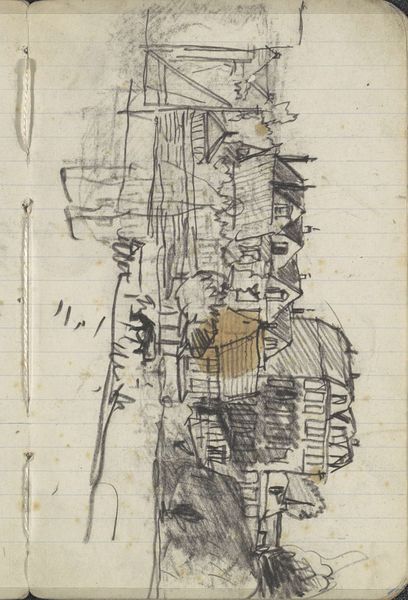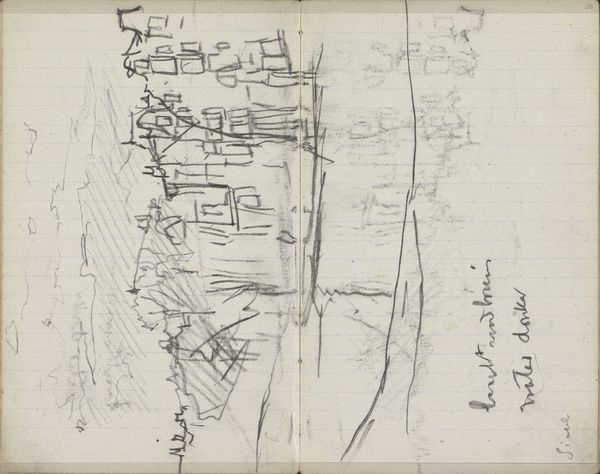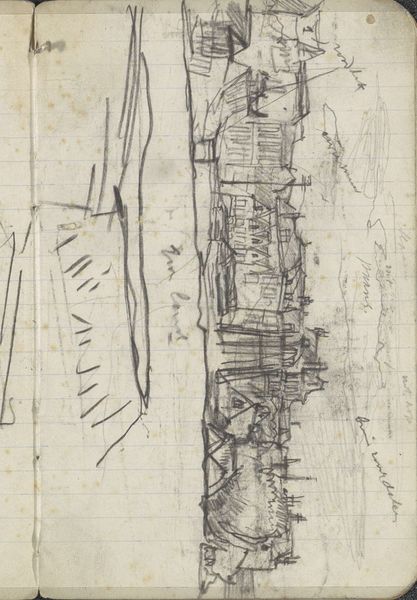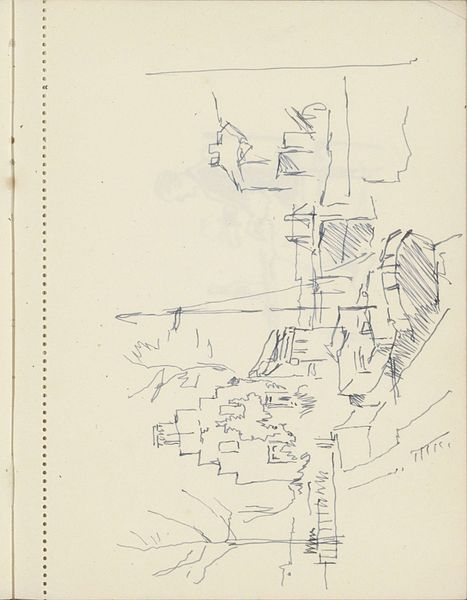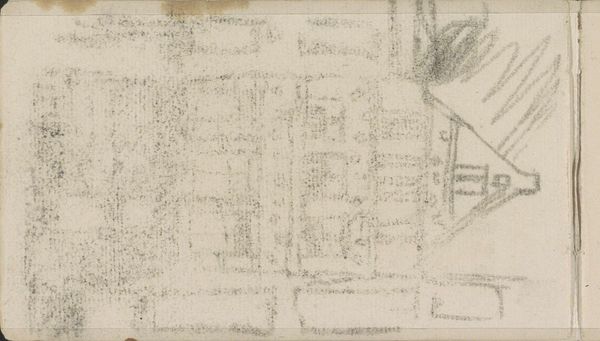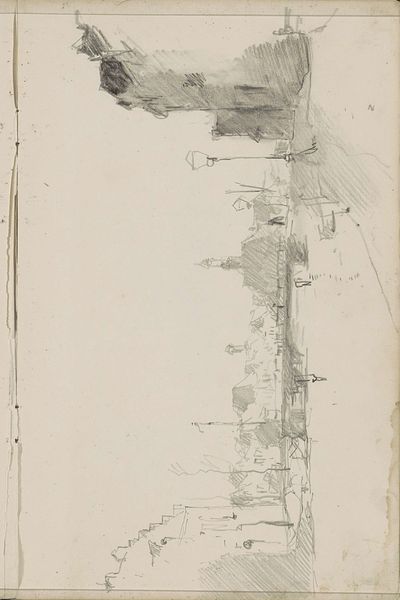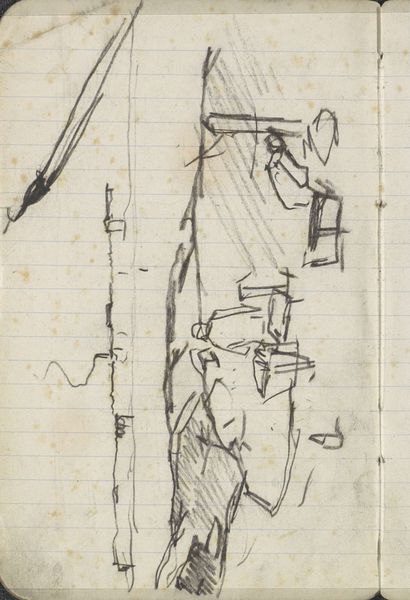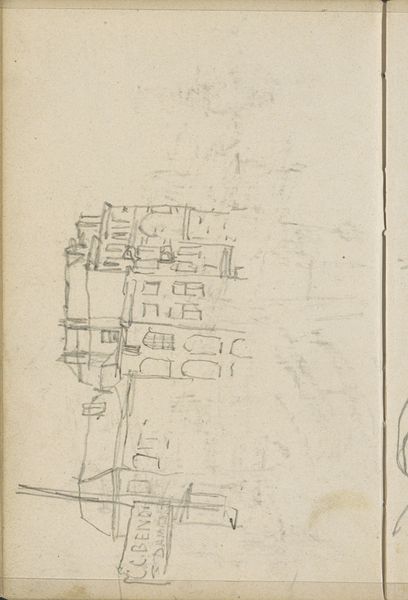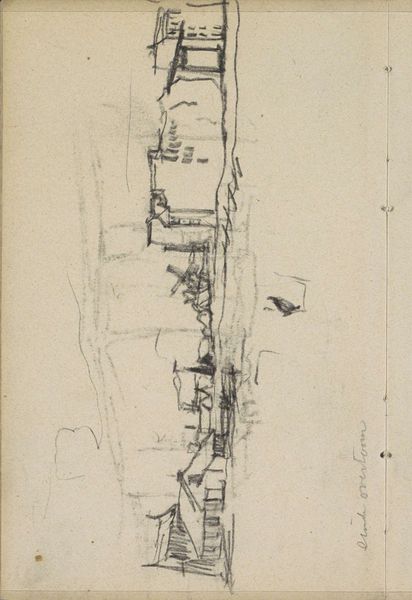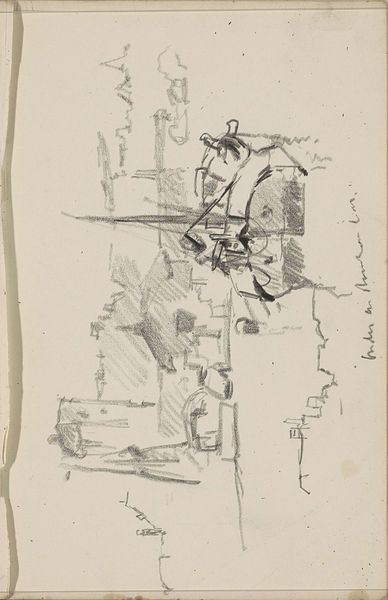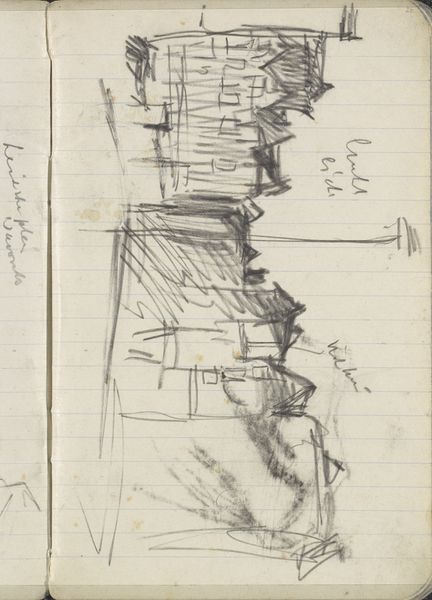
Copyright: Rijks Museum: Open Domain
Editor: So, this is George Hendrik Breitner's "Gezicht in Amsterdam," made with pencil on paper around 1896-1897. It's a very rapid sketch, almost like a fleeting impression of the city. What do you see in this piece that maybe I'm missing? Curator: I see the raw energy of urban life, a world captured not just in its physical form but also its psychological impact. Note how Breitner uses the quick, almost frantic lines. To me, they symbolize the fragmented experience of modern existence, a sensory overload typical of city life at the turn of the century. How does that read for you? Editor: That resonates! I hadn’t thought about it as ‘fragmented experience,’ but I see it now. The sketch feels unfinished, almost chaotic. Curator: Exactly! And within this apparent chaos lies a potent symbolism. The unfinished nature of the sketch itself becomes a symbol, reflecting the ever-evolving, incomplete nature of the modern city, and, indeed, of modernity itself. Think of how memory operates—a jumble of sensory impressions reconfigured over time. Editor: So it’s not just a literal depiction of Amsterdam, but a representation of the feeling of Amsterdam at that moment? Curator: Precisely! The city isn’t just bricks and mortar; it is a repository of experiences, memories, and anxieties. Breitner uses these rapidly rendered symbols to invoke that emotional weight. He reminds us that a city is, above all, a psychological landscape, imprinted in the collective consciousness. Do you think you see that now in the piece? Editor: Definitely. I will never look at another sketch in the same way. Curator: Good! It shows that visual symbols aren't just aesthetic choices. They're powerful carriers of cultural memory and human emotion.
Comments
No comments
Be the first to comment and join the conversation on the ultimate creative platform.
